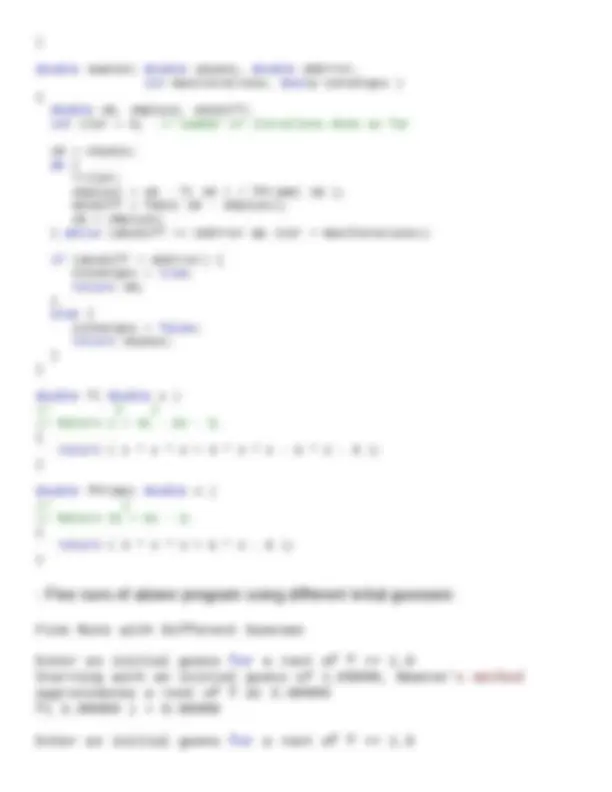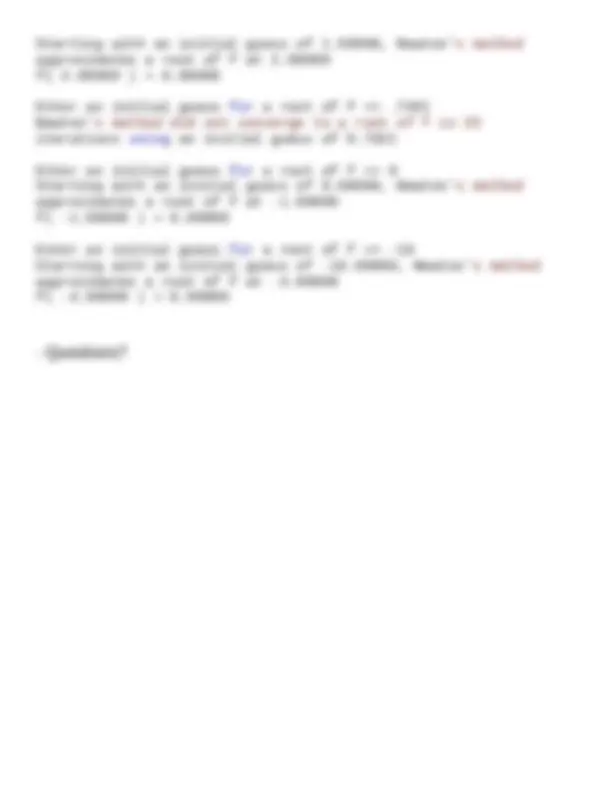




Study with the several resources on Docsity

Earn points by helping other students or get them with a premium plan


Prepare for your exams
Study with the several resources on Docsity

Earn points to download
Earn points by helping other students or get them with a premium plan
Community
Ask the community for help and clear up your study doubts
Discover the best universities in your country according to Docsity users
Free resources
Download our free guides on studying techniques, anxiety management strategies, and thesis advice from Docsity tutors
An introduction to newton's method, a numerical technique for finding the roots of a function. The mathematical derivation of the method, a graphical representation, and a c++ program that implements and tests the method. Students will learn how to use newton's method to approximate the roots of a function starting with an initial guess, and how to set acceptable tolerances and maximum iterations.
Typology: Study notes
1 / 4

This page cannot be seen from the preview
Don't miss anything!



// Program that tests Function Newton. #include